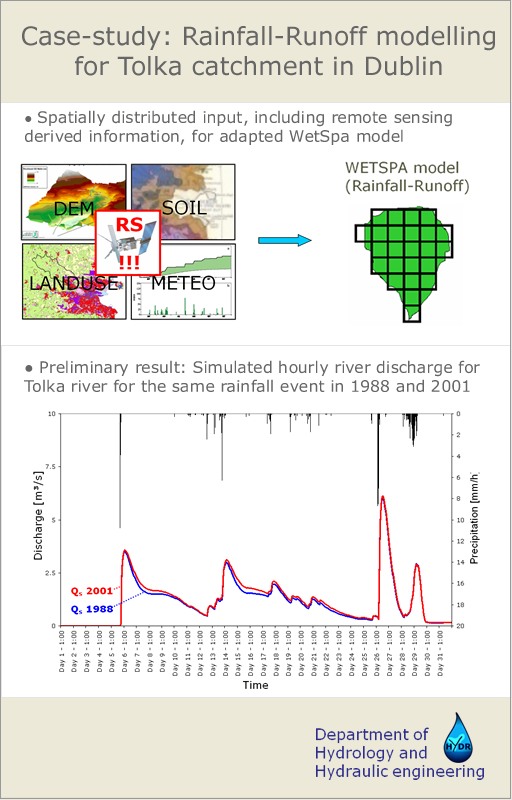| Text is coming soon
The fully-distributed nature of the WetSpa model allows an optimal use and integration of the spatially distributed remote sensing derived information, generated in several Work Packages (WP2, WP7, WP10). Why did we choose the Tolka catchment in Dublin , Ireland ? First of all, the Tolka catchment has a history of floods. Since 1880 17 major and minor floodings were registered, with the major floods mainly occurring in the last decades! Secondly, Dublin has known a steady increase of the developed area the past decades. Since 1950 the developed area increased with 25%. It is assumed that the high discharge rates of the major flooding events are strongly related to this steady urban growth. And as it is expected that this growing trend will continue in the coming decades, assessing the possible hydrological impacts of the urban dynamics is of great interest.
|
